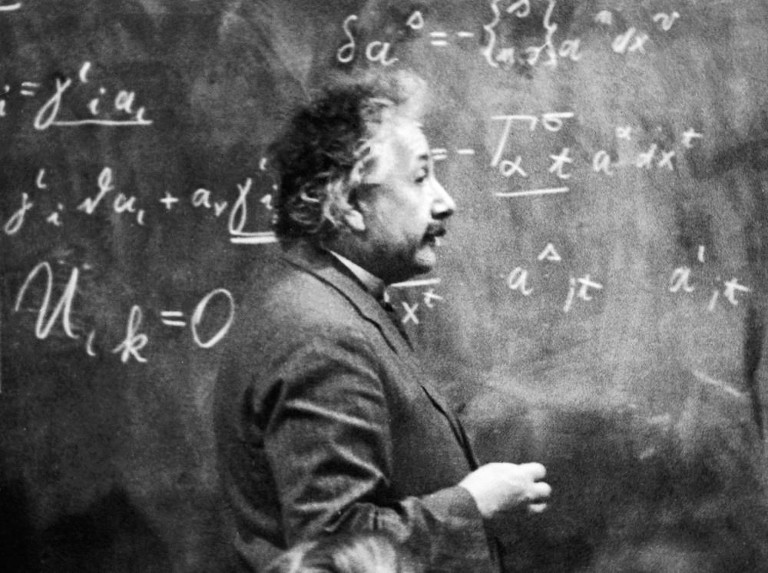The General Theory of Relativity

Curvature of Space-Time
In 1912, Einstein already knew that the bending of the flat "space-time" of the special theory was an important factor in the development of his new theory. After all, gravity causes to bend how objects travel through space. Einstein became convinced of this when he studied the behavior of a rotating disk. Rotation is a form of acceleration (the acceleration in a centrifuge presses your clothes against the inside of the drum). Because of Lorentz's length contraction, the outer circumference of the drum should become shorter the faster it spins. However, the diameter of the drum remains the same. The only way to do that is if the disc becomes a sort of soup plate. So space and time seemed really curved.
The Einsteintensor
How was Einstein supposed to include these geometric factors in his mathematical theory? With the help of his friend and colleague Marcel Grossman, an expert in geometry, he applied a kind of mathematics from the second half of the 19th century by the German mathematician Bernhard Riemann. Differential geometry uses equations that show how points on any curved plane are connected. This is done with a mathematical quantity called "tensor", a two-dimensional series of numbers, something like a matrix that indicates the distance between any two points in space. After a long search, Einstein found a tensor that described the gravitational curvature of space. It is now called the "Einsteintensor".
The Field Equation
All Einstein had to do now was connect this tensor to the content of space and time, the matter that is ultimately responsible for generating the gravitational field. This turned out to be a different tensor for the general theory of relativity. Its components take into account not only the mass present, but also the energy, for example in the form of radiation (as you can expect on the basis of E=mc2), impulse, pressure and voltage in the matter. Einstein's field equation, the cornerstone of general theory of relativity, is nothing more than a simple formula that connects this "energy pulse tensor" with the Einstein sensor.